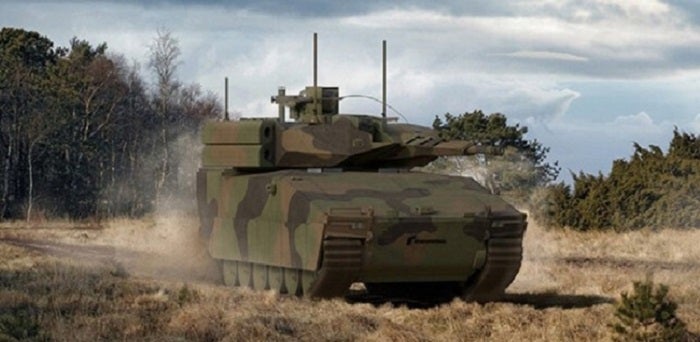
Since Hungary’s Zrínyi 2026 modernisation programme began eight years ago, the country’s Armed Forces have accelerated their acquisition of the latest weapon systems, but the nation’s unclear doctrinal objectives stymie this modernisation.
Faster procurement
GlobalData intelligence projects that Hungary is taking its commitment to Nato’s rule to spend 2% of gross domestic product (GDP) on defence very seriously. The Central European nation is expected to meet or exceed that rate for the future forecast years, reaching 2.9% of GDP spending by 2029.
The country’s flagship modernisation project, the Lynx programme, has progressed greatly. In August 2023, the Government and the German arms manufacturer Rheinmetall agreed to open a manufacturing facility in the country to produce the 209 Lynx KF41 infantry fighting vehicle units it had previously ordered.

In the same spirit, Hungary is exploring ways to bring uncrewed aerial systems (UAS) into the mix. One spokesperson observed that the new technology, which has seen proliferated use in the Ukraine conflict, has become “a reality of war,” serving an extensive use of functions from reconnaissance to offensive roles. GlobalData suggests that Hungary is particularly eyeing Türkiye’s Bayraktar TB2 medium-altitude, long-endurance UAS, for which the company forecasts spending to grow to $90m on the system in the next ten years.
Unclear doctrine
Now that Hungary is on track to furnish its Armed Forces, the Government is starting to face questions such as how to integrate these systems together and acquire systems with more agility, which the spokesperson stipulated is “definitely hard work.”
It’s not just about technology. It’s also about “changing mindset” beyond acquiring such low-hanging fruit.
How well do you really know your competitors?
Access the most comprehensive Company Profiles on the market, powered by GlobalData. Save hours of research. Gain competitive edge.

Thank you!
Your download email will arrive shortly
Not ready to buy yet? Download a free sample
We are confident about the unique quality of our Company Profiles. However, we want you to make the most beneficial decision for your business, so we offer a free sample that you can download by submitting the below form
By GlobalDataOne solution that will strengthen Hungary’s response to such questions may be its international collaboration, which Prime Minister Viktor Orban’s politics seems to impede as it positions Hunagry as an outlier member state within the EU and Nato in its Russian alignment.
Nevertheless, global collaboration is still being pursued. At the end of February 2024, the Defense Innovation Research Institute, in cooperation with the Nato Innovation Fund (NIF), provided new opportunities for Hungarian defence start-ups, revealed Brigadier General Imr Porkolab, the Hungarian Ministry of Defence’s (MoD) Commissioner for Defence Innovation.
It is difficult for start-up companies developing cutting-edge technology to find investors due to the longer market access time and the capital intensity of the development. Hungary’s MoD holds that the NIF eliminates this difficulty by making long-term (15-year) investments while focusing on developments at an early stage.



